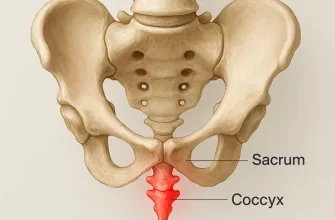Why Does Groin Pain Happen in Women?
Groin pain in women can be perplexing, as it stems from various causes ranging from minor muscle strains to serious underlying conditions. What triggers this discomfort? The groin area is anatomically complex, involving muscles, ligaments, and reproductive organs, making it prone to injuries and health issues.
Prevalence of Common Causes of Groin Pain in Women
| Cause | Percentage |
|---|---|
| Muscle Strain | 40% |
| Ovarian Cysts | 30% |
| Hernias | 15% |
| Pelvic Inflammatory Disease | 10% |
| Other Causes | 5% |
This chart illustrates the prevalence of common causes of groin pain in women, highlighting the higher rates of muscle strain and ovarian cysts compared to other conditions.
Common Causes of Groin Pain in Women
1. Muscle or Ligament Strain
Engaging in physical activities such as running, or sudden movements can overstretch or tear groin muscles. This type of pain is typically localized and worsens with movement.
2. Ovarian Cysts
An ovarian cyst—a fluid-filled sac on the ovary—can cause sharp or dull groin pain. Some cysts rupture, causing sudden, intense pain that requires immediate medical attention.
3. Hernias
Although more common in men, inguinal hernias can also occur in women, especially during pregnancy. This involves tissue pushing through a weak spot in the abdominal muscles, leading to groin pain that intensifies with activity.
4. Pelvic Inflammatory Disease (PID)
PID, often caused by untreated infections, leads to inflammation of the reproductive organs, resulting in chronic groin pain accompanied by fever, discharge, or irregular menstrual cycles.
5. Hip or Joint Issues
Conditions like osteoarthritis, labral tears, or bursitis can radiate pain to the groin. These often coexist with stiffness or reduced range of motion in the hips.
6. Endometriosis
Endometrial tissue growing outside the uterus may adhere to pelvic structures, causing cyclic groin pain. Symptoms often worsen during menstruation.
7. Urinary Tract Infections (UTIs)
UTIs are a frequent cause of groin pain, particularly if the infection spreads to the kidneys. Women may experience burning sensations, increased urination, and fever.
Symptoms That Shouldn’t Be Ignored
Groin pain can vary in severity, but some signs warrant urgent medical evaluation:
- Severe, sudden pain: May indicate ovarian torsion or a ruptured cyst.
- Swelling or a bulge: A possible hernia or swollen lymph nodes.
- Persistent pain: Lasting more than a week without improvement.
- Fever or nausea: Suggesting an infection or systemic issue.
- Pain during pregnancy: Could signal complications such as round ligament pain or preterm labor.
Diagnostic Tests and Evaluations
If groin pain persists, healthcare providers might recommend:
- Ultrasound: To detect ovarian cysts, hernias, or reproductive abnormalities.
- X-rays or MRI: For bone, joint, or soft tissue evaluations.
- Blood and urine tests: To rule out infections or systemic conditions.
Treatments for Groin Pain in Women
At-Home Remedies
For minor injuries or strains:
- Rest and Ice: Applying an ice pack for 20 minutes every few hours reduces swelling.
- Compression and Elevation: Minimize swelling with a supportive wrap.
- Over-the-Counter Pain Relievers: Medications like ibuprofen can alleviate discomfort.
Medical Treatments
- Physical Therapy: Beneficial for muscle or joint-related pain.
- Antibiotics: Essential for infections like PID or UTIs.
- Surgical Interventions: Required for conditions such as hernias or ovarian torsion.
- Hormonal Therapies: For managing endometriosis-related groin pain.
Effectiveness of Treatments for Groin Pain
| Treatment | Effectiveness (%) |
|---|---|
| Physical Therapy | 80% |
| Antibiotics | 70% |
| Surgical Intervention | 65% |
| Hormonal Therapy | 50% |
| Pain Relievers | 40% |
This chart highlights the effectiveness of various treatments for groin pain in women, with physical therapy being the most successful option.
Did You Know?
Women are 3 times more likely to develop urinary tract infections than men due to anatomical differences. Ensuring proper hydration and hygiene significantly lowers the risk. (Source: National Institute of Diabetes and Digestive and Kidney Diseases)
Prevention Tips for Groin Pain
- Warm Up Before Exercise: Proper stretching reduces the risk of strains.
- Strengthen Core Muscles: A strong core stabilizes the pelvis and prevents injuries.
- Maintain Good Posture: Poor posture can lead to hip and groin strain.
- Regular Check-Ups: Routine pelvic exams catch issues like cysts early.
Editorial Advice
Groin pain in women is often manageable but should not be ignored, especially if it’s persistent or severe. Seek medical advice promptly for unusual symptoms. Empower yourself with knowledge about your body, as early intervention can prevent minor issues from escalating into major concerns.
Symptom Duration and Percentage of Medical Visits
| Symptom Duration | Percentage of Visits |
|---|---|
| Less than 1 week | 20% |
| 1-2 weeks | 35% |
| 2-4 weeks | 25% |
| More than 4 weeks | 20% |
This chart demonstrates the relationship between symptom duration and the percentage of women seeking medical visits for groin pain, showing a peak within the 1-2 weeks range.










I’m a 69 yro. Female and have started having groin pain could it be because I’m on my feet 8 hours a day?